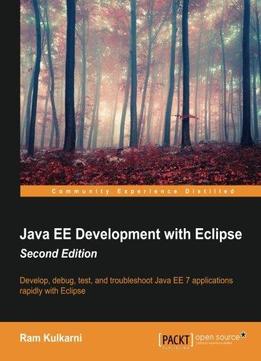
Java Ee Development With Eclipse, 2nd Edition
by Ram Kulkarni /
2015 / English / PDF
17 MB Download
Develop, debug, test, and troubleshoot Java EE 7 applications rapidly with Eclipse
About This Book
Go beyond simply learning Java EE APIs and explore the complete workflow of developing enterprise Java applications
Learn to use the features of Eclipse JEE to simplify Java EE application development
Develop and deploy complete applications with JEE
Who This Book Is For
If you are a Java developer who has little or no experience in JEE application development or you have experience in JEE technology but are looking for tips to simplify and accelerate your development process, then this book is for you.
What You Will Learn
Set up Eclipse, Tomcat, and Glassfish server for JEE application development
Use JSP, Servlet, JSF, and EJBs to create a user interface and write business logic
Create JEE database applications using JDBC and JPA
Handle asynchronous messages using MDBs for better scalability
Deploy and debug JEE applications and create SOAP and REST web services
Write unit tests and calculate code coverage
Troubleshoot application performance and memory issues
In Detail
Java EE is a technology for developing enterprise class, scalable applications. With recent changes to Java EE specifications, JEE application development has become a lot simpler. However, recent changes have also added many new specifications, some of which compete with existing JEE specification. Along with JEE specifications and APIs, it is also very important to understand the entire application development process and tools that can help simplify and accelerate JEE application development.
This guide provides a complete overview of developing JEE applications using Eclipse. The many features of the Eclipse IDE are explained. These enable the rapid development, debugging, testing, and deployment of JEE applications. You'll explore not just different JEE technologies and how to use them (JSP, JSF, JPA, JDBC, EJB, web services etc.), but also suitable technologies for different scenarios.
The book starts with how to set up the development environment for JEE applications and then goes on to describe many JEE specifications in detail, with an emphasis on examples. You'll learn how to deploy an example application on Tomcat and Glassfish Application Server.
You'll create a simple application that reads from a queue, processes the request, and publishes results to a topic and Eclipse MAT (Memory Analysis Tool) to debug memory issues.











